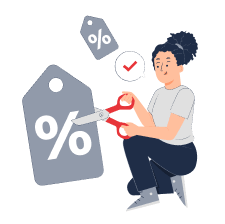From “Cheating” to “Learning Partner” – How Students Use AI for New Academic Heights
In modern universities, artificial intelligence, and in particular ChatGPT, is rapidly transforming from a controversial tool into a full-fledged student assistant.

Research shows that nearly 92% of students are already actively using generative AI in their studies, which is 66% more than the year before. What used to be seen as "cheating" or a threat to critical thinking is now taking on new meaning. "It's more like a learning partner and a communication tool to help us improve," notes Meghan Chin, a master's student in technology policy at Cambridge, sharing popular tips for using AI on TikTok.
Modern students, calling ChatGPT simply "Chat," use it to solve a wide range of educational tasks. From checking grammar and organizing notes to generating practice exam questions and even creating diagrams - AI is becoming a powerful tool for independent work. "You can have a verbal conversation, like with a professor, and interact with it," emphasizes Chin, recommending using AI to summarize complex topics. Jayne Devani of OpenAI, the developer of ChatGPT, supports this approach, suggesting uploading course slides and using AI to break down complex tasks into steps and clarify concepts.
However, despite the obvious benefits, the academic community calls for the wise use of AI, focusing on the development of "artificial intelligence literacy." Universities, such as Northumbria and the University of the Arts London, welcome the use of AI to support and structure work, but strongly recommend that students not rely solely on its content, avoiding "hallucinations" and fabricated references. Instead, AI is proposed to be used as an "alternative point of view" and a source for dialogue, stimulating critical thinking and independent analysis. Educational institutions strive to ensure that artificial intelligence helps students learn, rather than replaces the learning process, preparing them for a future where skills in working with AI will be universally in demand.












 How the Christmas Tree Became the Symbol of the New Year: From Pagan Groves to Sparkling Ornaments
How the Christmas Tree Became the Symbol of the New Year: From Pagan Groves to Sparkling Ornaments
 How to Keep New Year’s Resolutions: A Detailed Guide to Real Change
How to Keep New Year’s Resolutions: A Detailed Guide to Real Change
 6 Life Areas You Have Almost Certainly Never Paid Attention To
6 Life Areas You Have Almost Certainly Never Paid Attention To
 Test. What Winter Dessert Are You?
Test. What Winter Dessert Are You?
 Test: What Kind of Ancient Goddess Are You?
Test: What Kind of Ancient Goddess Are You?
 Test: Which Great Woman Would Invite You for Tea?
Test: Which Great Woman Would Invite You for Tea?
